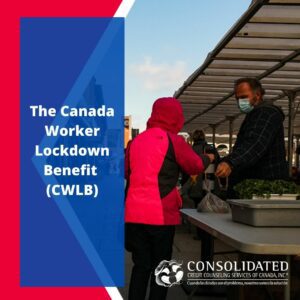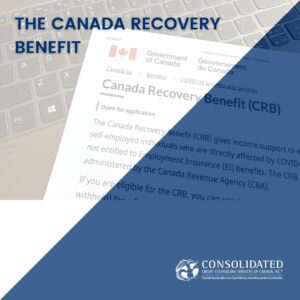Supply chain issues around the world are affecting Canadians. The Bank of Canada Governor, Tiff Macklem, expects a temporary high inflation rate. Economic recovery will take some time. With supply constraints, price increases will continue to persist. Globalization, COVID-19 lockdowns, and a resurgent Delta variant have created supply chain bottlenecks. Labour shortages, increased shipping costs, shortage of shipping containers, port closures, and factory shutdowns contributed too. Learn more about current supply chain issues in Canada below.
Surge in demand is clogging supply chains around the world
The world first shut down in 2020 due to the pandemic. Canadians and individuals around the world were stuck at home. Without activities to keep people entertained, connected, and occupied. People started ordering online. Amazon stock prices soared through the roof. Consumers could not spend money at restaurants, and evenings out with loved ones. They ordered anything and everything online. This was a huge turn upwards in demand. At a time when production was slowing down because of health and safety concerns. This huge increase in demand exposed a few key sourcing issues in supply chain management.
COVID-19 keeps disrupting everyone’s finances. We can help you if you fell into debt during the pandemic.
How did we get here?
The global supply chain has sourced much of its production to Asian countries. Shipping containers travelled from Asia to Europe and North America. Full of needed products, these shipping containers then remained empty and unused for some time. Western shipping ports delayed returning shipping containers to Asia. Creating issues in the shipment of products.
The Canadian economy has its largest trading partner, the United States, just to the south. Its second-largest trading partner is China. China dropped the amount it imports into Canada. A 30.9% decrease from $5.6 billion imported goods in March to $3.9 billion imported goods in July. Much of the goods coming from the United States have some manufacturing in China. Shipping costs to North America from Asia rose 63% between March and July. Shipping costs from Europe to North America rose 79%. The supply chain in Canada is scrambling to find domestic suppliers.
The unemployment rate has returned to pre-pandemic levels. With increased demand and increased need for domestic production. There are still huge labour shortages.
A shortage of everything
There is a shortage of all types of goods that also threatens Canada’s economic recovery. This is due to high demand, shipping delays and reduced production. Electronics has endured an especially hard hit. As there is a production shortage of semiconductors. Semiconductor electronic chips are a requirement for virtually all electric devices. Including toys, phones, computers, automobiles, and appliances. Canadians gear up for an anticipated busy holiday season. Expect holiday sales to reach the highest level since pre-pandemic. Many products will be hard to find at least until mid-2022.
Supply chain problems mean inflation
With demand high and production and shipments low, prices will go up. This is the effect called inflation. Canada’s central Bank aims to keep annual inflation rates around 2%. It has been well above this since April. The inflation rate reached 4.1% in August. It climbed higher to 4.4% in September. Higher than normal inflation rates will likely continue. Inflation levels like these have not occurred since 2003.
This inflation is noticeable even in grocery stores. Produce and meat have gone up in price. No product or cost is safe from inflation. To avoid consumer shock, some companies practice shrinkflation. This reduces the amount of product someone buys but keeps consumer prices the same. Shrinking chocolate bars are the prime example. Read Statistics Canada’s Consumer Price Index report for September 2021 for details.
Another area to watch is oil and gas. These energy prices have risen dramatically in Canada. Concerns and increases were first sparked by the Colonial Pipeline cyberattack. As the world opens, people are leaving their homes and travelling. What seemed like a temporary issue has been compounded by increased natural demand.
Covid-19 affecting Canada’s labour force
With reduced restrictions, employment rates are returning to pre-pandemic levels. There was a huge surge in unemployment initially. As the country opens, individuals are eager to find work and earn more. This has exceptionally shifted the job market. Many are avoiding services sector jobs. As they were the hardest hit by the pandemic. Few want to return to work that offers little stability.
Increase in job vacancies
There are many job vacancies despite the pandemic being over a year ago. 550,000 unfilled jobs in the first quarter of 2021 to 730,000 in the second quarter. These values will probably increase more. As many Canadians opted to retire early in the Pandemic. Especially truck drivers. Before the pandemic, 160,000 truck drivers handled all the Canada-US cross-border trade. These drivers were an older demographic. Now 20,000 of them have retired. Shifting production, shipping, transportation, and service sector needs have reshaped the job market.
The pandemic caused jobs to disappear
While opportunities exist, the pandemic destroyed many businesses. Some former places of employment still have not returned to pre-pandemic operations. Many have closed because of the pandemic.
Labour shortages will delay Canada’s economy until mid-2022
RSM Canada released a full report on the supply chain disruptions. They predict a slow economic recovery for Canada that will take at least until mid-2022. RSM has observed the increased shipping costs and concerns, oil demand, and production issues.
On the positive side, there’s potential for growth in Canada’s green industries
Not all is dim in Canada. With a recent federal election, the Trudeau government has a plan. Largely focusing on the housing market. The Liberals are also expected to meet climate initiatives. With goals of hitting targets ahead of schedule. There is a huge opportunity in the green energy sector.
What does this mean for you?
Within Canada, expect to have increased inflation. While this is unfavourable, there is more opportunity, but also delayed the economic recovery. If you find yourself struggling and in debt, stabilizing your finances will put you on a better footing. Not everyone can tackle debt alone. You may need support as our county’s economy bounces back. Consider contacting Consolidated Credit Services of Canada. We have financial professionals and solutions that can help you navigate any situation.




